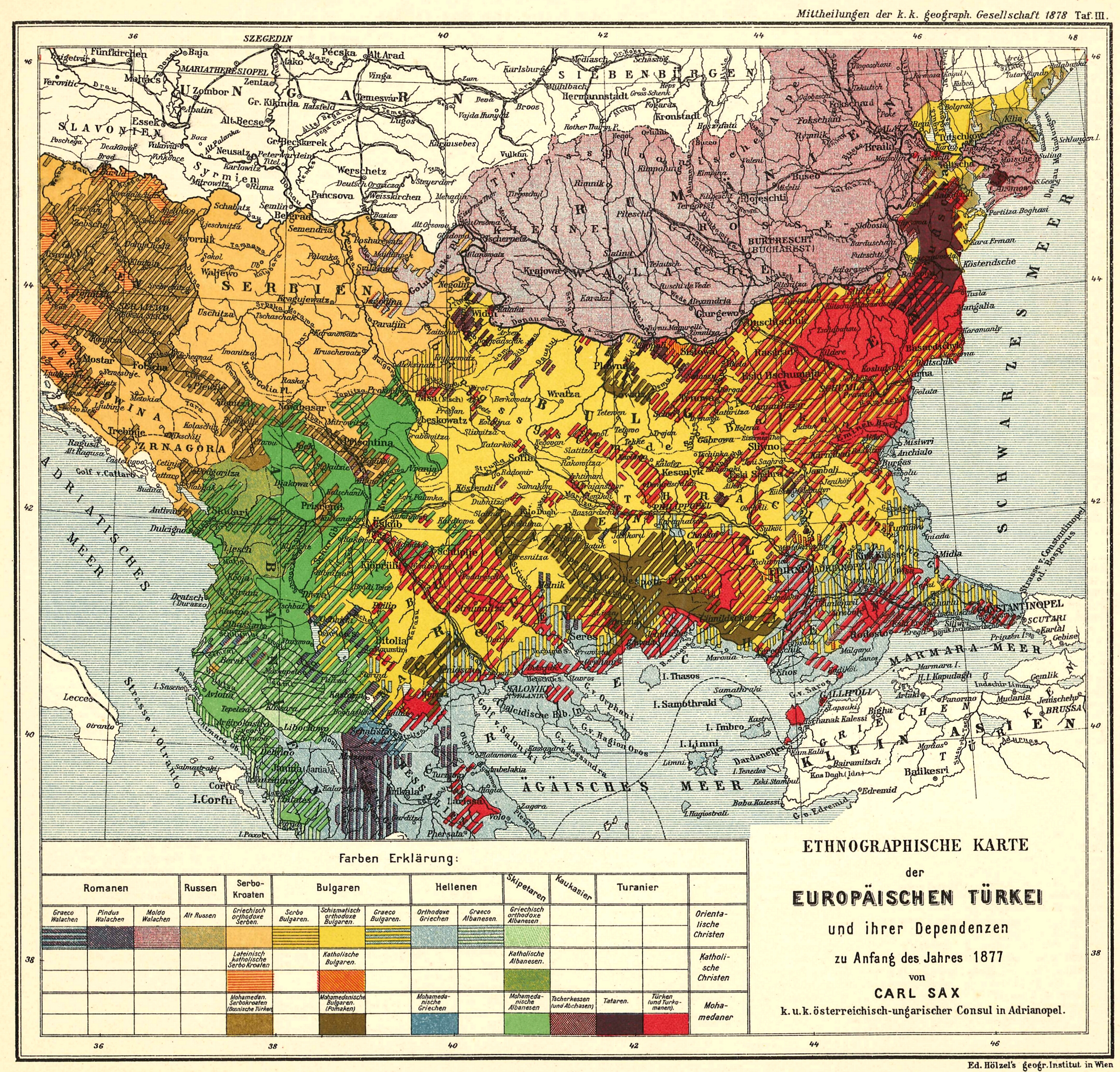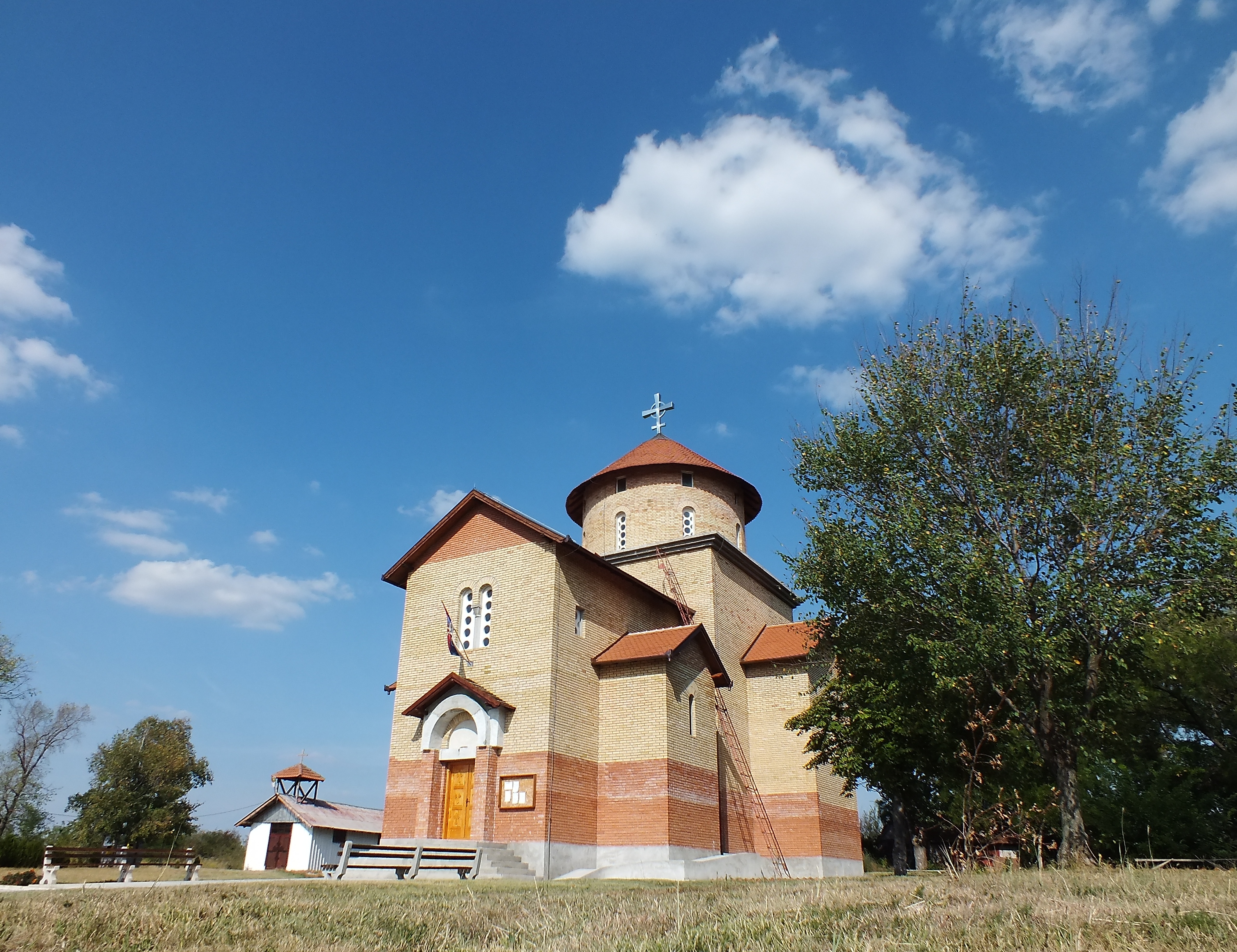|
Raška, Serbia
Raška ( sr-cyr, Рашка, ) is a town and municipality located in the Raška District of southwestern Serbia. The municipality has a population of 24,680 people, while the town has a population of 6,574 people (2011 census). It covers an area of 670 km2 (259 sq. mi.). The town is situated on the rivers Raška and Ibar. History The town and municipality bears the name of the historical Raška region. From 1929 to 1941, Raška was part of the Zeta Banovina of the Kingdom of Yugoslavia. Demographics According to the 2011 census results, the municipality of Raška has 24,678 inhabitants. Ethnic groups The ethnic composition of the municipality: Economy The following table gives a preview of total number of registered people employed in legal entities per their core activity (as of 2018): Gallery File:Centar Raške2.jpg, ''Town center square'' File:Centar Raške1.jpg, ''Town center square'' File:29.09.13 Raška 711.005 (10101184823).jpg, ''Train station in Raška'' Fil ... [...More Info...] [...Related Items...] OR: [Wikipedia] [Google] [Baidu] |
List Of Cities In Serbia
, plural: ) is elected through popular vote, elected by their citizens in local elections. Also, the presidents of the municipalities are often referred to as "mayors" in everyday usage. There are 29 cities (, singular: ), each having an assembly and budget of its own. As with a municipality, the territory of a city is composed of a city proper and surrounding villages (e.g. the territory of the City of Subotica is composed of the Subotica town and surrounding villages). The capital Belgrade is the only city on the level of Districts of Serbia, a district. All other cities are on the municipality level and are part of a district. ;City municipalities The city may or may not be divided into ''city municipalities''. Five cities (Belgrade, Niš, Požarevac, Vranje and Užice) comprise several city municipalities. Competences of cities and city municipalities are divided. The city municipalities of these six cities also have their assemblies and other prerogatives. The largest city mun ... [...More Info...] [...Related Items...] OR: [Wikipedia] [Google] [Baidu] |
Zeta Banovina
The Zeta Banovina ( sh-Latn-Cyrl, separator=" / ", Zetska banovina, Зетска бановина), was a province (banovina) of the Kingdom of Yugoslavia between 1929 and 1941. This province consisted of all of present-day Montenegro as well as adjacent parts of Central Serbia, Croatia, Kosovo and Bosnia and Herzegovina. It was named after the Zeta River which also gave its name to the medieval state of Zeta that roughly corresponds to modern-day Montenegro. The capital of Banovina was Cetinje. Borders According to the 1931 Constitution of the Kingdom of Yugoslavia, History In 1939, predominantly Catholic areas of the Zeta Banovina from the Konavle to Pelješac including Dubrovnik were merged with a new Banovina of Croatia. World War II In 1941, the World War II Axis Powers occupied the remaining area of the Zeta Banovina. A small area around the Gulf of Kotor was annexed by Fascist Italy while much of the rest was joined with Italian-occupied Montenegro and Albania. East ... [...More Info...] [...Related Items...] OR: [Wikipedia] [Google] [Baidu] |
Savatije Milošević
Savatije Milošević ( sr-cyr, Саватије Милошевић; 1876 – 1905), known as Vojvoda Savatije, was a Serbian hajduk and Chetnik commander. Life Early life Savatije Miličević Milošević (Саватије Миличевић Милошевић) was born in Pavlica, Raška, at the time part of the Ottoman Empire (today Serbia). At the age of 25, Milošević murdered Pavle Jasnić, a chief of a ''srez'' (municipality) in Raška, because of a blood feud, and joined the hajduks (brigands) with whom he was active in the Ottoman Empire. He found refuge in Peć, Kosovo Vilayet, at the house of Albanian kachak Mula Zeka. When the authority started searching for him, he fled to the Principality of Montenegro where he befriended the Serbian emigreés Ranko Tajsić and ''prota'' Milan Đurić. Chetnik Organization He participated in the famous battle at Čelopek (April 1905). Together with Lazar Kujundžić and Živojin Milovanović he turned and went for Poreče, throug ... [...More Info...] [...Related Items...] OR: [Wikipedia] [Google] [Baidu] |
Branko Jovicic
Branko (Cyrillic script: Бранко; ) is a South Slavic male given name found in all of the former Yugoslavia. It is related to the names Branimir and Branislav, and the female equivalent is Branka. People named Branko include: * Branko Babić (born 1947), Serbian football manager * Branko Baković (born 1981), Serbian footballer * Branko Baletić (born 1946), Serbian-Montenegrin film director and producer * Branko Bauer (1921–2002), Croatian film director * Branko Bokun (1920–2011), Yugoslav-British author and journalist * Branko Bošković (born 1980), Montenegrin footballer * Branko Bošnjak (1923–1996), Croatian philosopher * Branko Bošnjak (born 1955), Yugoslav footballer * Branko Bošnjaković (born 1939), Dutch-Croatian physicist * Branko Brnović (born 1967), Montenegrin football manager * Branko Buljević (born 1947), Croatian-Australian footballer * Branko Cikatić (1954–2020), Croatian martial artist * Branko Crvenkovski (born 1962), Macedonian politician * ... [...More Info...] [...Related Items...] OR: [Wikipedia] [Google] [Baidu] |
Brvenik
Brvenik is a village in the municipality of Raška, Serbia Serbia (, ; Serbian language, Serbian: , , ), officially the Republic of Serbia (Serbian language, Serbian: , , ), is a landlocked country in Southeast Europe, Southeastern and Central Europe, situated at the crossroads of the Pannonian Bas .... According to the 2002 census, the village has a population of 67 people.Popis stanovništva, domaćinstava i Stanova 2002. Knjiga 1: Nacionalna ili etnička pripadnost po naseljima. Republika Srbija, Republički zavod za statistiku Beograd 2003. References Populated places in Raška District {{RaškaRS-geo-stub ... [...More Info...] [...Related Items...] OR: [Wikipedia] [Google] [Baidu] |
Baljevac Na Ibru
Baljevac ( sr-cyr, Баљевац), also known as Baljevac na Ibru ( sr-cyr, Баљевац на Ибру), is a town located in the municipality of Raška, southwestern Serbia. It is situated on the banks of the Ibar River The Ibar ( sr-cyrl, Ибар, ), also known as the Ibër and Ibri ( sq, Ibër, Ibri), is a river that flows through eastern Montenegro, northern Kosovo and central Serbia, with a total length of . The river begins in the Hajla mountain, in Roža .... The population of the town is 1,482 people (2011 census). References Populated places in Raška District {{RaškaRS-geo-stub ... [...More Info...] [...Related Items...] OR: [Wikipedia] [Google] [Baidu] |
Jošanička Banja
Jošanička Banja ( sr-cyr, Јошаничка Бања) is a spa town located in the municipality of Raška, southwestern Serbia. As of 2011 census, it has a population of 1,036 inhabitants. Trivia In 500 BC, Hellenistic pottery including Megarian bowls were excavated in the town.The Illyrians - John Wilkes Notable individuals * German, Serbian Patriarch See also * List of spa towns in Serbia Spa towns in Serbia are rich in mineral water, mud, air, or other characteristics that help or facilitate discomfort, speed up healing or recovering, or otherwise assist the healing process. There are over 40 spas in Serbia, and over 400,000 ... References External links Populated places in Raška District Spa towns in Serbia {{RaškaRS-geo-stub ... [...More Info...] [...Related Items...] OR: [Wikipedia] [Google] [Baidu] |
Statistical Office Of The Republic Of Serbia
The Statistical Office of the Republic of Serbia ( sr-cyr, Републички завод за статистику Србије; sr-lat, Republički zavod za statistiku Srbije or RBS) is a specialized government agency of Serbia charged with collecting and disseminating official statistics. History Official statistics in the Republic of Serbia was established in 1862, when Prince Mihailo Obrenovic passed an act granting powers to the economic department of the Ministry of Finance concerning all statistical work. This was the beginning of state statistics in Serbia, but historic data suggest there was even earlier collecting of statistical data on tax payers, census of the cattle (in 1824) and regular population censuses (from 1834), as well as, since 1843, regular monitoring of statistical data on external trade, domestic trade, prices and wages. Statistical work was performed even before the foundation of the National Statistical Office through participation of Serbian repre ... [...More Info...] [...Related Items...] OR: [Wikipedia] [Google] [Baidu] |
Gorani People
The Gorani (, ) or Goranci (, ), are a Slavic Muslim ethnic group inhabiting the Gora region—the triangle between Kosovo, Albania, and North Macedonia. They number an estimated 60,000 people, and speak a transitional South Slavic dialect, called '' Goranski''. The vast majority of the Gorani people adhere to Sunni Islam. Name The ethnonym ''Goranci'', meaning "highlanders", is derived from the Slavic toponym ''gora'', which means "hill, mountain". Another autonym of this people is ''Našinci'', which literally means "our people, our ones". In Macedonian sources, the Gorani are sometimes called Torbeši, a term used for Muslim Macedonians. In the Albanian language, they are known as ''Goranët'' "Goranët jetojnë në krahinën e Gorës, që sot ndahet mes shteteve të Shqipërisë, të Kosovës etë Maqedonisë, krahinë nga ku e marrin edhe emrin." and sometimes by other exonyms, such as ''Bulgareci'' ("Bulgarians"), ''Torbesh'' ("bag carriers") and ''Poturë'' ("tu ... [...More Info...] [...Related Items...] OR: [Wikipedia] [Google] [Baidu] |
Albanians In Serbia
Albanians in Serbia ( sq, Shqiptarët në Serbi; sr, Албанци у Србији, Albanci u Srbiji) are an officially recognized ethnic minority living in the present-day country of Serbia. Geography In the municipalities of Preševo and Bujanovac Albanians form the majority of population (89.1% in Preševo and 61% in Bujanovac according to the 2002 census). In the municipality of Medveđa, Albanians are second largest ethnic group (after Serbs), and their participation in this municipality was 32% in 1981 census, 28.67% in 1991 and 26.17% in 2002. The region of Bujanovac and Preševo is widely known as the Preševo Valley (Serbian: Прешевска Долина, ''Preševska Dolina'', Albanian: ''Lugina e Preshevës''). History Late antiquity In late antiquity, the contact zone between Late Proto-Albanian and Balkan Latin was located in eastern and southeastern Serbia. This area included Nish, a city in southeastern Serbia. The toponym ''Niš'' in Slavic evolved from a ... [...More Info...] [...Related Items...] OR: [Wikipedia] [Google] [Baidu] |
Macedonians In Serbia
Macedonians of Serbia are an officially recognized ethnic minority in Serbia. History The first session of the Anti-fascist Assembly for the National Liberation of Macedonia (ASNOM) was held on 2 August 1944, the anniversary of the Ilinden Uprising, at Prohor Pčinjski Monastery in the Bulgarian occupation zone of Yugoslavia, what is today southern Serbia, just north of the Macedonian border. The Assembly declared Macedonia the nation-state of Macedonians within Yugoslavia. The monastery which is in the region of Macedonia, was ceded after WWII to SR Macedonia, but was transferred to SR Serbia in 1947. In Bukles, Vojvodina, a center for refugees of the Greek Civil War was established in May 1945 through 1949. Among the refugees settled here were ethnic Macedonians. During the years 1945–1991 ethnic Macedonians and the Macedonian language were a constituent part of the Socialist Federal Republic of Yugoslavia. Some ethnic Aromanians and particularly Megleno-Romania ... [...More Info...] [...Related Items...] OR: [Wikipedia] [Google] [Baidu] |
Montenegrins Of Serbia
The Montenegrins of Serbia ( sr, Црногорци у Србији, Crnogorci u Srbiji) are a national minority in the country. According to the 2011 census, there are 38,527 citizens of recent Montenegrin descent, Montenegrin Serbs, or ethnic Montenegrins in Serbia. They are the sixth largest ethnic community in the Vojvodina province. Geography The largest concentration of Montenegrins in Vojvodina could be found in the municipalities of Vrbas (24.79%), Mali Iđoš (20.83%), and Kula (16.34%). Settlements in Vojvodina with an absolute or relative Montenegrin majority are: Lovćenac in the Mali Iđoš municipality with 56.86% Montenegrins, Kruščić in the Kula municipality with 32.64%, and Montenegrins in Savino Selo in the Vrbas municipality with 38.20% Montenegrins. Formerly, the village of Bačko Dobro Polje in the Vrbas municipality also had a Montenegrin majority (According to the 1971 census, Montenegrins comprised 55.39% of population of this village, while ... [...More Info...] [...Related Items...] OR: [Wikipedia] [Google] [Baidu] |

.png)

